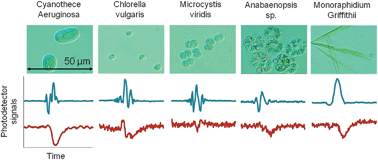Optical classification of algae species with a glass lab-on-a-chip
Abstract
The identification of submillimetre phytoplankton is important for monitoring environmental and climate changes, as well as evaluating

* Corresponding authors
a
Department of Mechanical Engineering, Eindhoven University of Technology, Postbus 513, 5600MB Eindhoven, The Netherlands
E-mail:
y.bellouard@tue.nl
Fax: +31-40-247-2603
Tel: +31-40-247-3715
b Norwegian University of Life Sciences UMB, box 5003, 1432 Ås, Norway
The identification of submillimetre phytoplankton is important for monitoring environmental and climate changes, as well as evaluating

 Please wait while we load your content...
Something went wrong. Try again?
Please wait while we load your content...
Something went wrong. Try again?
A. Schaap, T. Rohrlack and Y. Bellouard, Lab Chip, 2012, 12, 1527 DOI: 10.1039/C2LC21091F
To request permission to reproduce material from this article, please go to the Copyright Clearance Center request page.
If you are an author contributing to an RSC publication, you do not need to request permission provided correct acknowledgement is given.
If you are the author of this article, you do not need to request permission to reproduce figures and diagrams provided correct acknowledgement is given. If you want to reproduce the whole article in a third-party publication (excluding your thesis/dissertation for which permission is not required) please go to the Copyright Clearance Center request page.
Read more about how to correctly acknowledge RSC content.
 Fetching data from CrossRef.
Fetching data from CrossRef.
This may take some time to load.
Loading related content
